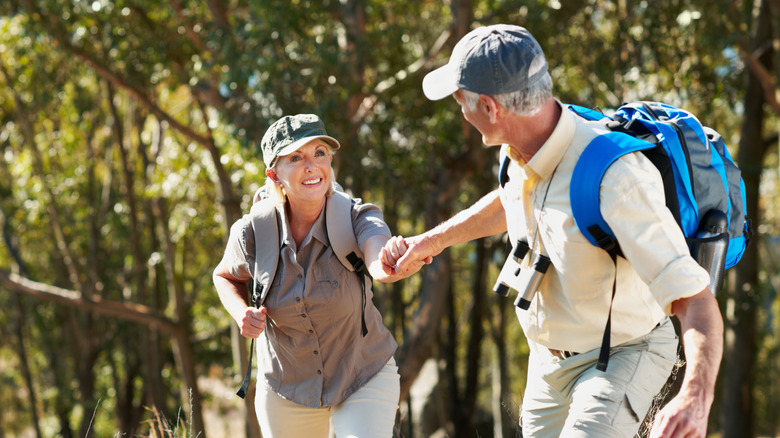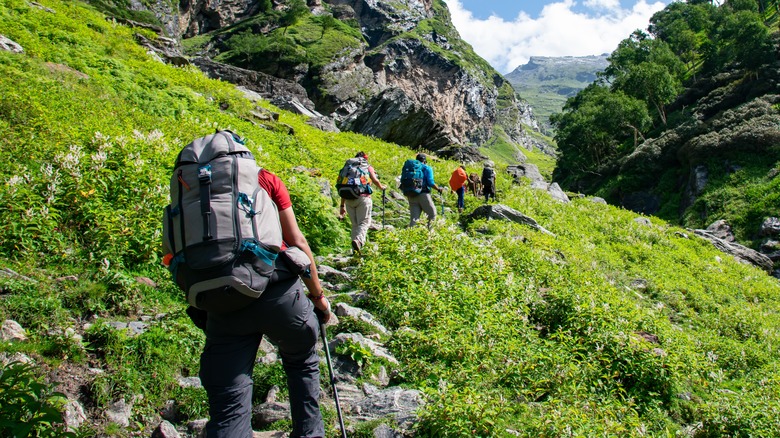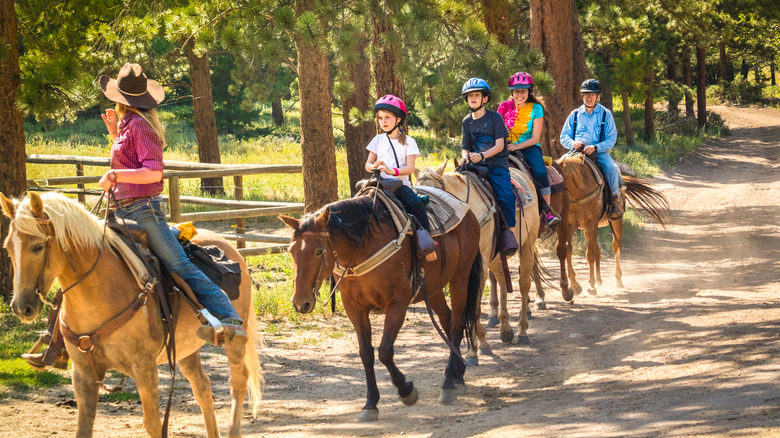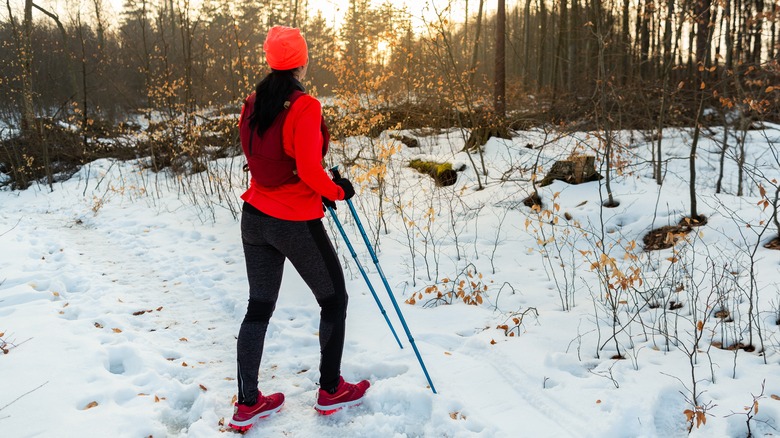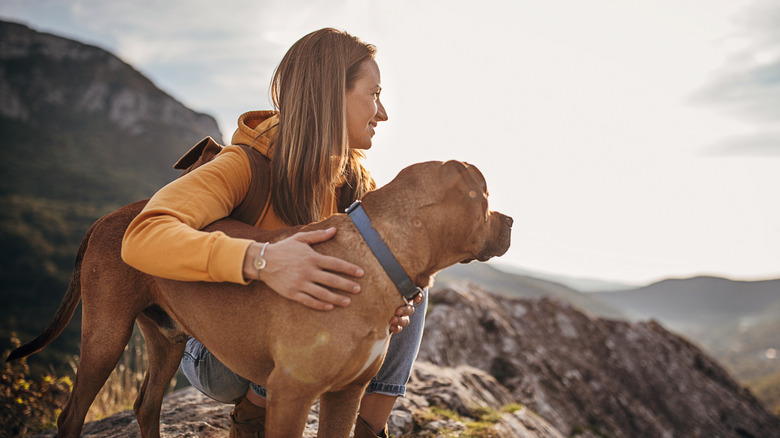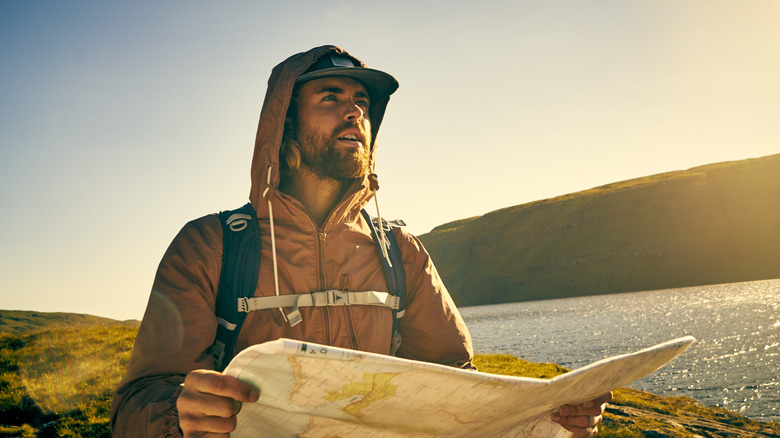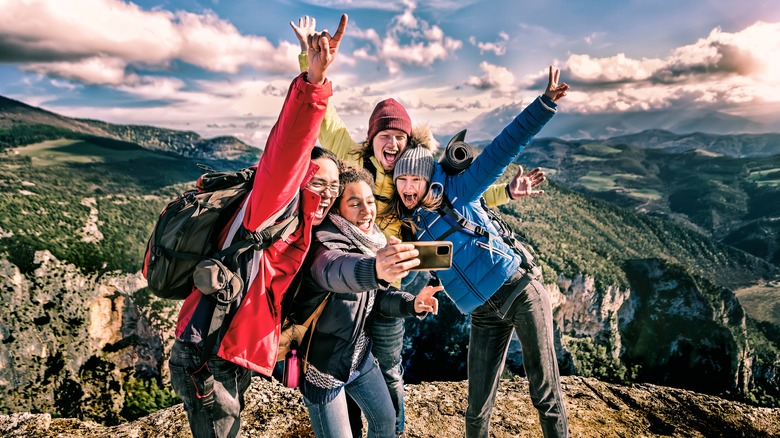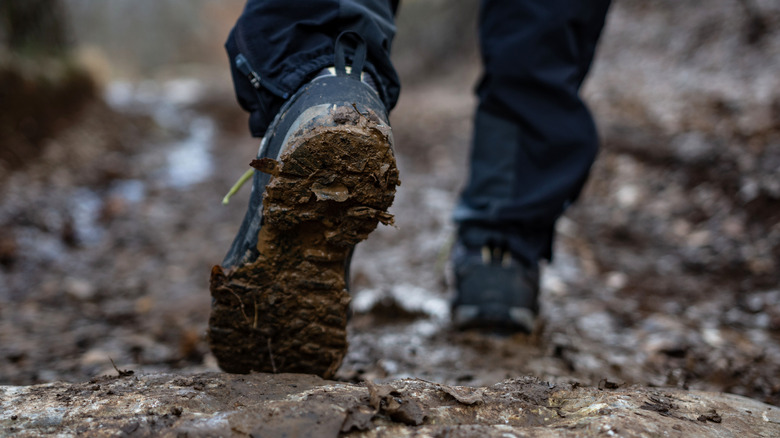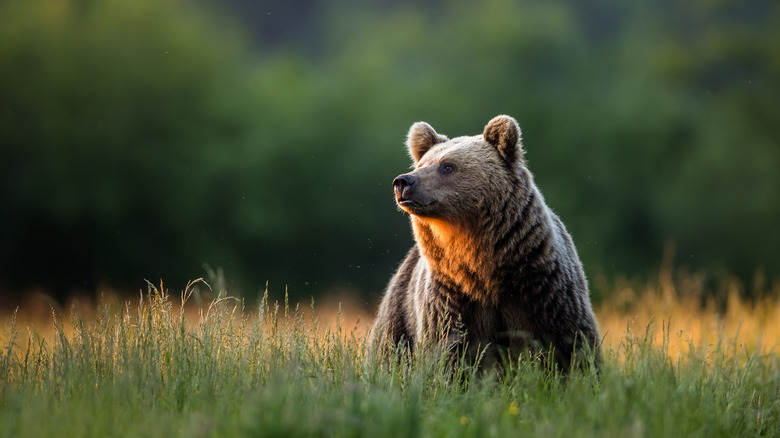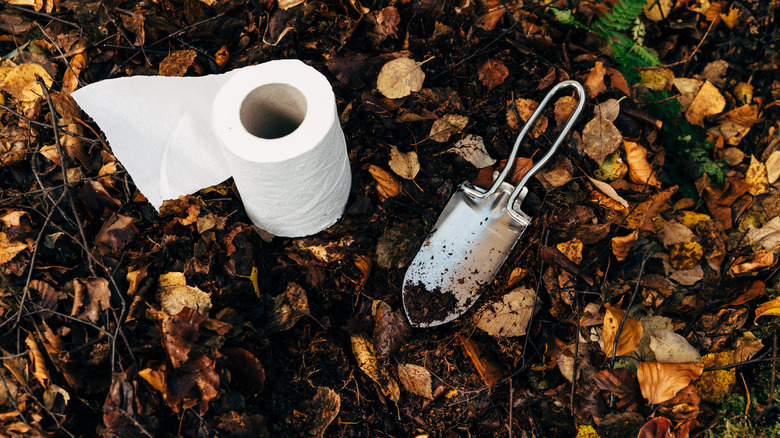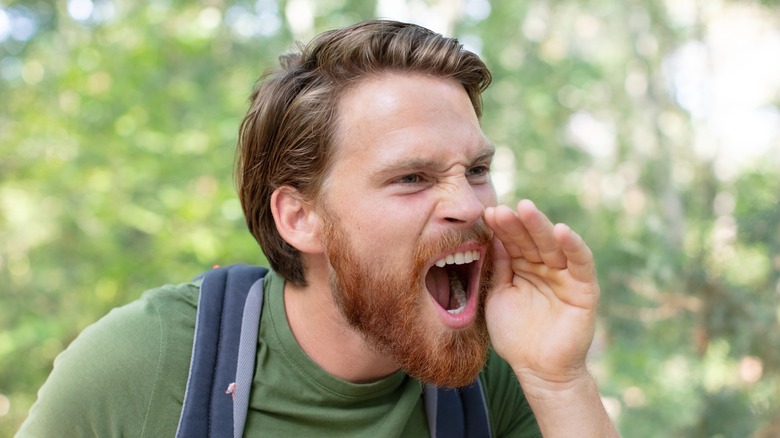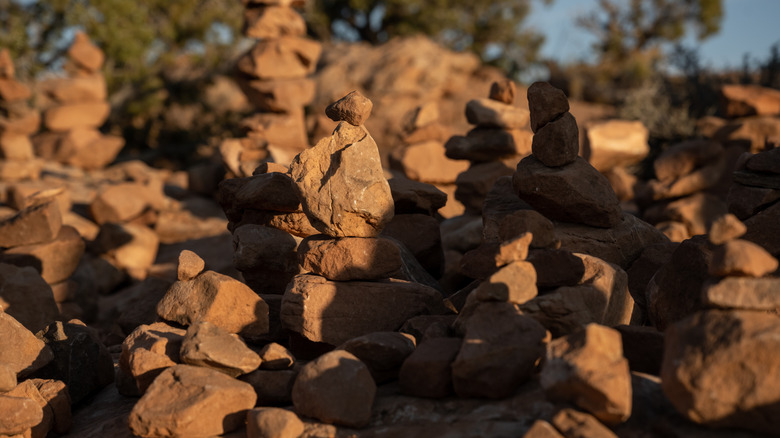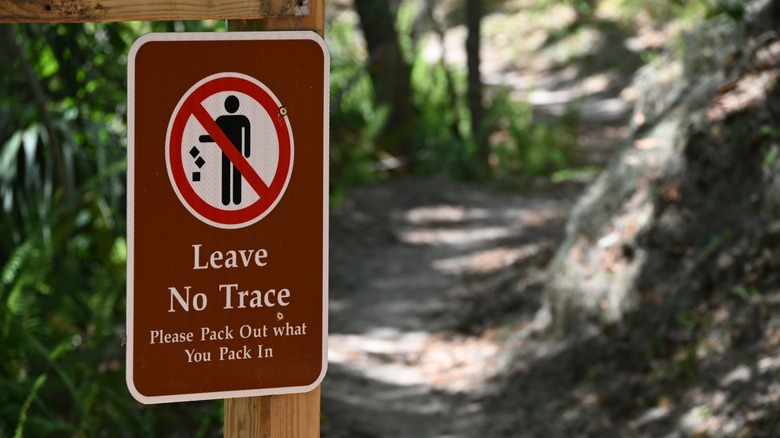13 Rules Of Trail Etiquette You Should Be Following During Your Hike
Just as there are unwritten rules that govern how you can camp without being a nuisance, so too are there rules on how to hike. The only difference is that a lot of these rules are written down and encouraged to be understood by anyone planning to hit the trails. Hiking etiquette is a collection of principles, all of which work towards making time out hiking a pleasurable experience for everyone.
While there are a lot of rules that govern behavior on the hiking trail, a level of common sense is required in order to understand these rules. Things like knowing when hunting season is and how to properly dress for it, keeping your dog leashed, or limiting your cell phone usage are actions that anyone who goes hiking on a regular basis needs to understand. This list is therefore going to be an excellent resource to help you absorb the etiquette rules of the hiking trail.
Some of what we are about to share may come as no surprise, while others might not be common knowledge. Wherever they stand in your understanding, it's worthwhile to know these 13 rules of trail etiquette you should be following during your hike.
Right of way
Understanding who has the right of way on a hiking trail is a prerequisite. Right of way is a set of rules that keeps trail traffic from becoming clogged. The more people observe the right of way, the more free flowing the trail is, and a better time is had by all.
There are two major etiquette rules that govern right of way on the hiking trail. The first is that uphill hikers have the right of way over downhill hikers. Like stairs in an office building, there will be hiking trails that are enough for two hikers to walk past each other without needing to stop. However, most hiking trails are far too thin for two people to walk abreast comfortably. So, if you're the one hiking up on a skinny trail, and someone is coming down, stop and flatten yourself as best you can against the trail edge and allow them to pass before continuing onwards. This rule applies to solo hikers and a team of two.
The rules for right of way change, however, when a group is involved. Groups take precedence over solo hikers on the trail. So, whether a group is heading up or down, they take precedence over a solo hiker. It is much easier for one person to stop and let a group pass than it is for a group to stop and let an individual pass.
Mountain bikes, horses, and ATVs, oh my!
Feet are not the only things that traverse hiking trails. Wheels and hooves have also been known to plod the paths. Therefore, the rules of right of way don't just apply to hikers. Mountain bikers, dirt bikers, ATV riders, sled dogs, snowmobiles, and equestrians all have a home on certain trails, and it is important to know who has right of way over whom.
In general, those with wheels should give way to those on foot, but this is not always feasible. Common sense, and physics, dictate that it is easier to stop walking than it is to stop a moving vehicle, especially one with an engine. As a matter of safety, however, those on wheels should do their best to give way to those on foot. However, hikers should also be alert, and yield to the wheeled folk if they aren't able to stop.
While hikers and cyclists are fairly easy to manage, right of way MUST be granted to horses. These animals are easily spooked. When a horse gets agitated, it will buck, kick, and attempt to throw its rider. Being the powerful animals that they are, a horse will cause serious injury. Being kicked by a horse is enough to send anyone to the hospital. So, if you're on wheels, there will be no zooming by a horse at a million miles an hour. And if you're on foot, don't be a jerk and spook a horse. You'll regret it.
Hunting season rules
At no time is it more important to understand safety etiquette than during hunting season. The important thing for hikers to remember is that hunting is in fact going on while they are out in the woods. And while the hunters might be a far distance away from the trail, it is extremely important that they know you're there too.
It is imperative for any hiker going for a walk during hunting season to wear orange. This is the universally accepted color because orange is not a naturally occurring color (outside of the fruit) in nature and is one of the most highly visible colors to the human eye. The darker the clothing you wear, the more you might look like an animal at a distance. This is dangerous for you, because if a hunter can't tell the difference between you and a deer, there is a chance you will get seriously injured, or even killed.
Hunters have a part to play in safety too, but for you as the hiker, you need to do everything you can to keep yourself safe and distinguish yourself. Wear that orange hat, but also make sure, should you hear a gunshot nearby, that you make noise and announce your presence to the hunter in the area. It also helps to avoid going hiking in the early morning or evening, as these are prime hunting times.
Leash your dog
Though most hikers will smile at the sight of a friendly pup on the trail, those smiles will quickly fade if there is no leash attached to the dog. Leashing is one of the most basic trail etiquette rules. Many canine owners abide by it, but some choose to ignore it completely. To the latter, we say this. It doesn't matter how well mannered, or how well trained your dog might be. Always keep it leashed on the hiking trail.
Not only does the leash provide better control, allowing you to keep the dog at bay if something should excite it, but its use also makes other hikers feel safe. While many people like dogs, there are a fair amount who don't. You need to cater to those folks purely out of compassion and an understanding of their apprehension. Also remember, even though your dog might be friendly around you, it might not be so around other people. It's also safe to keep your dog leashed when around a horse. An agitated horse will not hesitate to kick an unleashed dog to death if the dog sufficiently frightens it. Dog walkers should also yield their right of way to passers by.
Oh, and one more note about dogs on the trail. Dog owners, please pick up after your pet. No one wants to step in, smell, or otherwise clean up a dog mess that should've been taken care of by the owner.
Stick to the trail
This shouldn't really need to be said, but we know there are some out there who, for whatever reason, just don't like to stick to hiking trails. And while this impulse to trail blaze is excellent in other areas of life, it needs to be cautioned against on the actual trail. Hiking trails are cut by professionals and are the way that they are for a very good reason.
Trails are cut in the most ecologically friendly way possible. They work with the environment instead of against it. By walking off of the path, you are negating the care that was taken to preserve the ecosystem of the area. In doing so, you are disrespecting not only the effort of the forestry service, but the ecological well being of the trail. Not only that, but if you stray too far from the trail, you will likely become lost.
Becoming lost out in the wilderness is a mistake that should not be taken lightly. There are plenty of experienced backpackers who have met their end because they strayed too far from the path, or took a proverbial "shortcut". In the case of trouble, emergency services or park rangers are going to have a harder time finding you than they would be if you had simply stuck to the trail in the first place. Remember, they are there for a reason. Follow them and save yourself, and others, a headache.
Be friendly
There is no easier way to say this. Be nice to other people on the trail. This doesn't just mean giving the correct right of way, or being mindful of your dog. Being nice to people on the trail is about taking their experiences into account, as well as your own. Even if you are having a rotten day, and really just wanted to get out on the trail by yourself for a while, it pays to give a passing hiker a wave, a smile, and even a quick hello. Chances are you will make the passing hiker feel better, as well as yourself.
Though hiking can be a solitary and inward sport, that is no reason to be cold towards other hikers. How you behave towards someone can have a greater influence than you realize. If you're treated rudely at a restaurant or store, the likelihood of you shopping there again is minimal. The same is true for a trail. If you sour someone's hike by being rude, they will likely go somewhere else to hike so as never to run into you again.
Being friendly extends to the environment surrounding you as well. If you see trash or other litter, clean it up. You're out to experience the natural beauty of nature, not to crunch on candy wrappers and beer cans. A little kindness and thoughtfulness will go a long way towards improving the hiking experience for everyone.
Be mindful of trail conditions
Just like you should be mindful of potential litter and manmade hazards, so too should you be mindful of the trail conditions and where you place your feet. Much like you don't want to go off the trail, damage wildlife, and get lost, you also don't want to create a path that was never intended to be there in the first place.
It's a universal truth that some people hike slower than others. While the urge to pass them by going off of the trail is tangible, it should be avoided. If you continuously widen trails by passing people or creating a shortcut around an area, you're actually damaging the trail. This is especially true with switchback trails that go up and down mountains. Cutting switchbacks is not only dangerous to your person, but can seriously erode and damage the trail itself.
And speaking of muddy trails, hiking when the conditions are too wet could also lead to lasting trail damage. The more you trod on a muddy area, the more the ground gets destroyed and compacted. Sections of the trail that are slightly muddy don't necessarily mean that the conditions will get worse. But if the entire trail is totally bogged down in moisture, it's best to turn around and go home. Worsening the trails is not something one would consider good etiquette.
Do not disturb or feed wildlife
This one is a no-brainer. Under absolutely no circumstances should hikers approach or try to feed wildlife. There are multiple reasons for this, not the least of which is the safety of the hiker. It's not just the big animals that pose a risk to hiking safety. Trying to feed soft, cute-looking or cuddly animals could actually be far more dangerous than you might think. It is best never to approach these animals to begin with. However, most animals will ignore humans unless they feel specifically threatened.
Another reason not to feed animals is because it affects their natural inclinations. By introducing food to an animal, there's the potential that they will become overly dependent on it. Animals naturally forage and hunt for food. If you create a dependency on new foods, they will come to expect it when other humans enter their territory. This makes the animals far more daring, far more likely to interact with humans, and far more likely to go looking for opportunities to eat human foods.
Most interactions with wild animals upset the natural order of things. So, while they are perfectly fine to admire at a distance, that distance needs to be respected.
Limit smartphone use
Though it is hard these days to be separated from our beloved phones, one of the reasons you're out hiking is so that you can take a break from technology and enjoy nature. However, we can all admit that smartphones are one of those modern conveniences that can improve your hiking experience to a certain extent. If you're one for listening to music while walking, for instance, having your library at the tip of your fingertips is a tremendous benefit. And having your camera means that you can take pictures of your triumphs and the amazing views on your journey. Nevertheless, you should limit the usage of your phone.
You could argue that cell phones equipped with GPS are vital to your navigation efforts while hiking. This is true to a certain extent, but they should not be relied upon as such. Signal can get lost, batteries die, and coordinates could be plugged incorrectly. It is a far better use of your time and skill to learn how to read a map.
Also, don't make any phone calls while you're on the trail. Firstly, your signal is probably going to be poor, and secondly, you are not out there to be taking conference calls. You're there to enjoy the scenery around you and to make interpersonal connections with your fellow hikers. So, do yourself a favor, and silence your phone or turn it off completely.
Using the woods as a bathroom
This may seem crass, but there is no avoiding discussing it. When you've gotta go, you've gotta go. However, where and how you go is a big part of how you maintain hiking etiquette on the trail while answering nature's call.
Believe it or not, there is actually a rule for how to properly go to the bathroom in the woods. Apart from giving way to other hikers, going to the bathroom is the only time when you should ever stray from the trail. Don't go too deeply into the woods, though. The standard trail-to-woodland bathroom distance is 200 feet. This distance provides you with enough space to allow some form of privacy. Plus, it's polite for the other hikers not to see you doing your business up close.
How you handle your waste is also a matter of etiquette. If it's liquid, there is no need to clean up. If it is solid, however, you need to bury it in the ground. Burying solid waste increases the speed at which it decomposes, meaning that it will not affect the surrounding environment. Plus, it masks the smell. So, be sure to carry a small spade and some toilet paper with you when you're out for a long hike. Because, trust us, you don't want to use leaves.
Keep the noise down
Volume on the trail is an important factor of the hike. While carrying on a conversation that can be easily heard between you and a partner is completely fine, shouting, excessive laughter, and general noisy behavior is to be discouraged. Remember, nearly everyone who goes out for a hike is expecting to hear nothing but the tranquil sounds of the environment, not your continuously cackling laughter.
So, one of the things you need to be aware of is your own volume and how you are carrying on a conversation. It's part of being nice while hiking. It is taking the consideration of others into account and making sure that you are treating the environment the way you would want to be treated outside of it.
This extends to music as well. Remember how we said smartphones are brilliant for listening to tunes on the trail? That's only acceptable if you have headphones. Blasting music is just as rude on a hiking trail as it is at a campsite. Not everyone shares your taste in music, so keep it to yourself if you want to listen to it. Loud music also spooks wild animals, which is never a good idea. Unless it's bears. Those guys will clear off in a hurry at loud music.
Leave what you find
When you are out hiking, you are a guest. You are a visitor in a place that does not belong to you, and you should not be bringing anything into the woods that you will not take back with you. By the same token, you should not bring anything out of the woods. That means sticks, rocks, or flowers that you happen to pick along the way. It also means not creating any structures that were not there to begin with.
One thing that you might see on a hiking trail is a rock cairn, one of those towers that are built out with a base of large rocks at the bottom that get progressively smaller as they reach to the top. You need to be careful with these because removal of the rocks from where they have been can potentially cause more erosion somewhere down the line, and also cause navigational issues.
This not only helps preserve the ecosystem, but keeps anything that could be toxic to your home environment from making its way onto your property. That random stick your kiddo picked up could spread disease to your other trees and plants. Best to leave things where they are.
Leave no trace
None of the etiquette rules we've explained are going to mean anything if you do not understand the source of where most of them come from. The idea of leaving what you find is only part of what it means to Leave No Trace. On the whole, however, Leaving No Trace is a set of detailed principles all hikers should follow.
The Leave No Trace Organization has developed seven principles that govern and further the development of hiking etiquette. These principles include being compassionate to fellow hikers, leaving what you find, respecting wildlife, minimizing campfire impacts, disposing of waste properly, trail sustainability, and hiker preparedness. The idea is to foster good stewardship of America's trails by educating current and future generations on what it means to be a good hiker. Understanding this foundation is critical to understanding the specifics of the other rules we've just listed.
It can be easy to forget that we share the trails with others. Hiking can be a very solitary affair. And while we might think that our etiquette slips won't affect things in the long run, developing bad habits is not going to do you, the trail, or your fellow hikers any favors. So, keep these 13 rules in mind the next time you're out on the trail. They will keep you safe, polite, and lead to a good time hiking.
